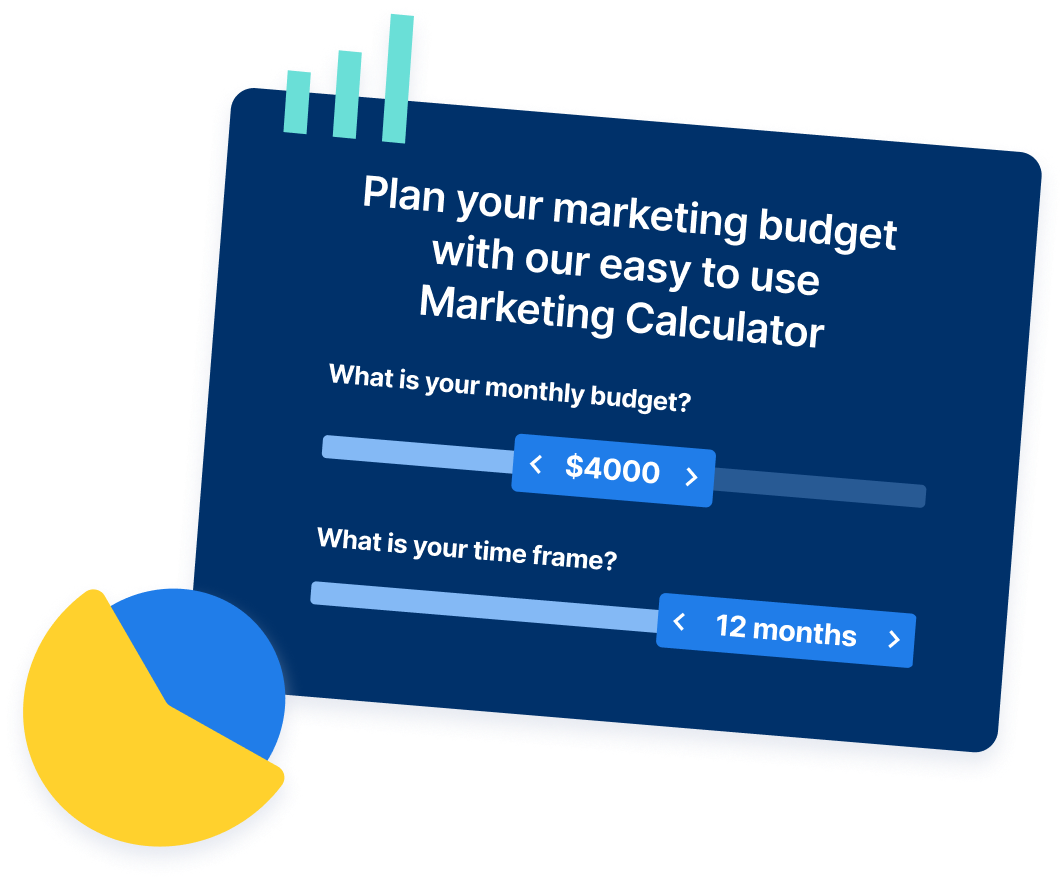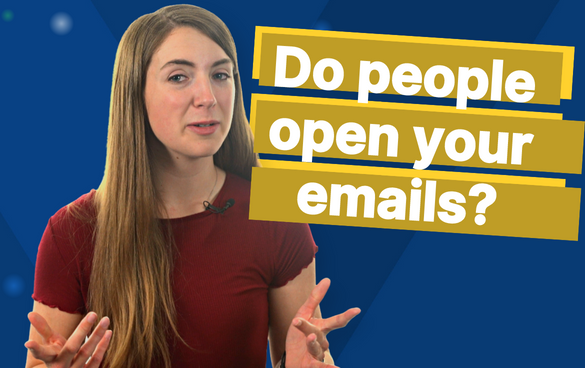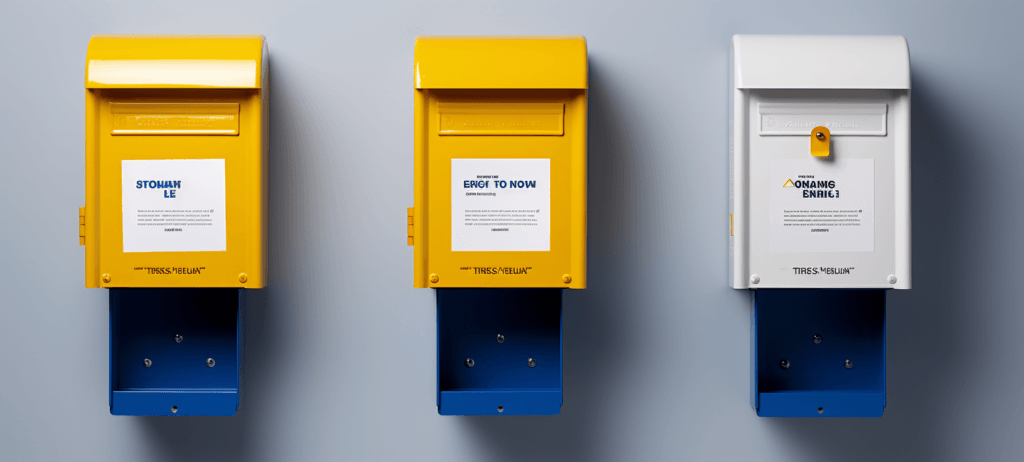- Home
- Blog
- Email Marketing How to Increase Email Open Rate: 5 Tips to Get Started
How to Increase Email Open Rate: 5 Tips to Get Started
-
 Published: Oct 10, 2022
Published: Oct 10, 2022
-
 8 min. read
8 min. read
-
 Jessica Bonacci
Jessica Bonacci Content Writer
Content Writer
- Jessica is a Google Analytics certified Digital Video Analyst at WebFX. She has created over 100 videos for the WebFX YouTube channel (youtube.com/webfx) in the last two years. Jessica specializes in video marketing and also loves content marketing, SEO, social media marketing, and many other aspects of digital marketing. When she’s not creating videos, Jessica enjoys listening to music, reading, writing, and watching movies.
In this video, Internet Marketer Ashley shares five tips for how to increase email open rate.
Transcript:
Did you know that 100% of email users have an email account? Mind-blowing email statistic.
In all seriousness, people around the world use email. If you want to learn how to increase email open rates so that more people read the content you’ve poured your heart into, you’ve stumbled upon a great video.
This video contains five tips you can try to increase your email marketing open rate, plus a little explanation of the basics — which I’ll get into right now.
What is email open rate?
Your open rate represents how many people — who successfully received your email — opened your email. That means the email landed in their inbox without returning any errors or bouncing back, and they went out of their way to open it up.
What is the average email open rate?
Across industries, the average email open rate sits at just over 19%.
This number may change because of things like your industry, or even the time you send your email.
I will note that with Apple’s iOS 15 update, measuring your email marketing open rate has become a little bit more difficult. People using Apple’s mail app have more privacy options, leading to less accurate data being available to marketers.
But, you can still take action to get more people opening, reading, and converting from your email marketing efforts.
5 tips to increase email open rates
1. Build trust through your sender name
You’ve probably been told not to talk to strangers at some point in your life. This translates to your inbox. We don’t like to open emails from people we don’t know.
Don’t be a stranger when you choose the sender name for your emails. The email sender, or “From” name, is one of the first things people see when they look at your emails. In fact, data shows that 42% of people look at a sender name when figuring out if they want to open an email.
If someone signed up for emails from The Example Company, then they expect the emails to come from The Example Company, or a representative of The Example company. A good From name for this business would look something like, Bob from The Example Company, or simply, The Example Company—rather than [email protected].
Remember to authenticate your sender domain, too. This adds an additional layer of trust to your emails. How you do this depends on the platform you send your emails from.
Next up in this video on how to increase email open rates: Your subject line.
2. Use your subject line to capture attention
While your “From” name helps establish who you are, your subject line tells people why they should read your emails.
The subject line is a short line of text (or emojis) that tell people what they can expect from your emails. You don’t have to give everything away in your subject. If you do that, you’ll likely have a lower open rate. You just have to share enough information so that people know what to expect when they open the email.
Let’s say your email newsletter is about tips for growing flowers. You can write a bunch of different subject lines (depending on the angle of your content, of course).
Here are a few possibilities:
- Do these 5 things for flowers that last months — It tells you that there’s a list of tips, but not what’s in the list. It also shares that the reader will benefit from the email because their flowers will last for months.
- Are you doing these 5 things to grow healthy flowers? — Again, you know there is a list of five tips but you don’t know what the list contains. This subject line also plays on our curiosity by ending with a question. Are you doing what you can to have a healthy garden?
- 5 things [insert flower expert] does to grow vibrant flowers — If an expert does it, it must work. Infuse your subject line with authority and trustworthiness by sharing tips from an expert.
Can’t forget to personalize your subject line, either! Your email platform likely has a feature where you can automatically insert each subscriber’s name or company. Statistics show that personalized emails lead to 26% more opens, so this little tip can be a big win.
Once you have your “From” name and subject line written, along with the contents of the email, your next focus will be when to reach your subscribers.
3. Send emails when your audience wants them
Listen, you’ll probably read a bunch of articles that tell you if you send your emails at 6 p.m. on Tuesdays or 11 a.m. on Wednesdays, you’ll increase email open rates. That may work for some businesses, but it’s more of a suggestion than a rule.
You’ll want to use your own data to determine when to send emails. This not only includes the day and time, but also the frequency. If you send emails too frequently, for example, you may have people deleting emails before they even read the subject line.
To back up my point from earlier that there’s not one golden email schedule, I’ll share some data. One survey concluded that about 27% of marketers send email campaigns multiple times each month, just over 30% send content weekly, and more than 13% send emails either monthly, daily, or a few times each week. That’s a wide variety of email schedules.
Figuring out the best cadence requires some testing on your part. Maybe even surveying your subscribers to understand their preferences, and putting them into different buckets based on their preferred schedule. Once you find that sweet spot, you’ll likely see your target metrics, including open rate, increase.
4. Match email content to your audience
Did you know that 100% of people won’t open your emails if they don’t want to? That’s useless fact number two of this video.
If someone subscribes to your emails, and then you don’t give them the content they expect, they won’t continue to open the emails — thus bringing down your average email open rate. If you promise advice on gardening, give your subscribers advice on gardening.
Don’t just decide one day that you’re tired of gardening and want to make your emails about monster trucks. If you really want to pivot, test your content.
If you do have an audience that consists of people with different goals, try email segmentation. This tactic means you put your subscribers into different buckets based on factors like their interests or their interactions with your business.
Let’s say Customer A has requested a quote for your services. Customer B gave you their email in exchange for access to an informational guide.
Customer A is closer to buying than Customer B, which means that Customer A should receive emails focused on closing a sale — including but not limited to case studies, testimonials, and information about your pricing.
Customer B is still in the research stage of their journey, so you won’t want to bombard them with sales content. You’ll want to start by sending them other educational resources. The goal with this customer is to start with general information and gently nudge them towards a purchase.
While both of these imaginary customers have shown interest in your business, they should not be sent the same emails.
However, you can’t please everyone. There will be people who don’t open your emails, even if you put your heart and soul into your content and it stays on topic.
You’ll want to go through your subscriber list on a regular basis — maybe quarterly or every six months — to remove inactive subscribers. That alone will help increase your open rate because you’ll have fewer people ignoring your emails and more people who engage with them.
5. Improve your opt-in strategy
The quality of your email subscribers has a direct impact on your open rates. And removing inactive subscribers isn’t the only thing you can do to ensure the people on your list are getting something from your emails.
- First, make sure you clearly communicate what people will get when signing up for your emails.
- Second, use a tool that certifies an email’s validity. Say no to fake emails, especially if people try to download a guide or get a discount that way.
- Third, enable double opt-ins. This means that after someone gives you their email, they have to confirm it by taking another action like clicking a link in their email or going to a certain landing page. You know the subscribers are actually interested in your emails if they go out of their way to take a second step.
You can definitely do more when thinking about how to increase email open rates, so use this video as the basis of your strategies.
If you’d like to keep learning about email marketing and other tactics to help you grow your business online, subscribe to our YouTube channel and our email newsletter, Revenue Weekly. We share content on the regular, so you won’t want to miss a thing.
Best of luck with your email marketing, revenue driver!
-
 Jessica is a Google Analytics certified Digital Video Analyst at WebFX. She has created over 100 videos for the WebFX YouTube channel (youtube.com/webfx) in the last two years. Jessica specializes in video marketing and also loves content marketing, SEO, social media marketing, and many other aspects of digital marketing. When she’s not creating videos, Jessica enjoys listening to music, reading, writing, and watching movies.
Jessica is a Google Analytics certified Digital Video Analyst at WebFX. She has created over 100 videos for the WebFX YouTube channel (youtube.com/webfx) in the last two years. Jessica specializes in video marketing and also loves content marketing, SEO, social media marketing, and many other aspects of digital marketing. When she’s not creating videos, Jessica enjoys listening to music, reading, writing, and watching movies. -

WebFX is a full-service marketing agency with 1,100+ client reviews and a 4.9-star rating on Clutch! Find out how our expert team and revenue-accelerating tech can drive results for you! Learn more
Try our free Marketing Calculator
Craft a tailored online marketing strategy! Utilize our free Internet marketing calculator for a custom plan based on your location, reach, timeframe, and budget.
Plan Your Marketing Budget

Looking for More?
Get expert ideas, industry updates, case studies, and more straight to your inbox to help you level up and get ahead.
"*" indicates required fields
Try our free Marketing Calculator
Craft a tailored online marketing strategy! Utilize our free Internet marketing calculator for a custom plan based on your location, reach, timeframe, and budget.
Plan Your Marketing Budget





